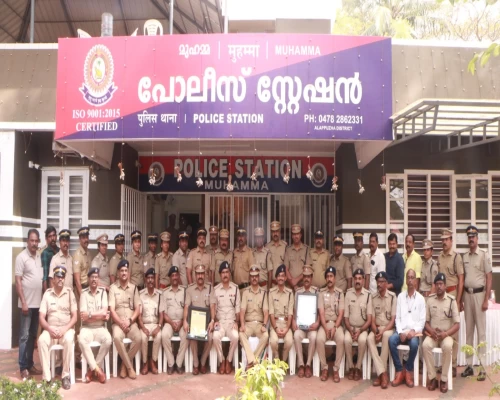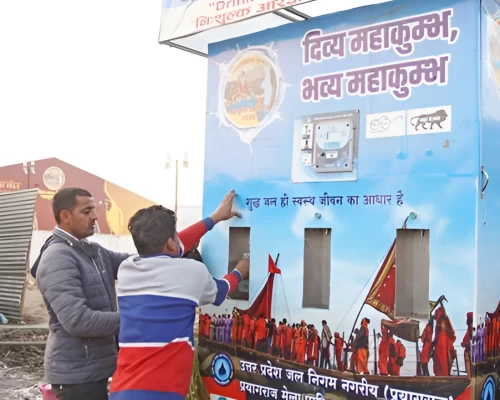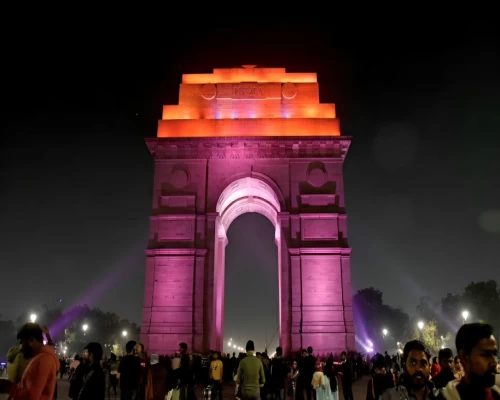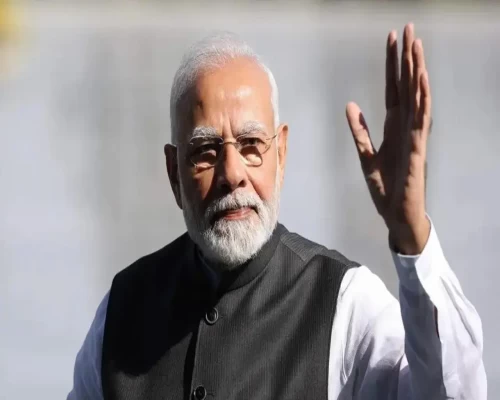
Guwahati: Counting leopards in non-forest areas is not an ordinary task. It is challenging in more ways than one. From ensuring accuracy to minimal duplicay, every survey of wild animals involves a great deal of risk. “It is fraught with challenges but is quite thrilling as well,” said Sunnydeo Choudhury, an Indian Forest Service (IFS) officer of 2011 batch, Assam-Meghalaya cadre, while speaking to Rajeev Ranjan Roy of Bureaucrats India. Currently serving as the Divisional Forest Officer (DFO) North Kamrup Division, Rangia, he has undertaken a number of measures, which have brought bouquets to him. From managing Assam-Mizoram border issues to vigorously protecting the land from state sponsored encroachment by Mizoram, he is also credited with bringing illegal timber felling and trade to a halt. Read Full Interview:
How is going the fist leopard population estimation in non-forest area in Assam? How has been the experience so far?
The leopard population estimation is going on in full steam. Almost 50 per cent of the camera has been installed in the forest and non forest area till date. The best part of this exercise is the involvement of enthusiastic volunteers of around 60-70 in numbers who turned out to assist us in the exercise. We are excited for the result. The District Administration also supported us very much in this exercise.
It is said that you have left nothing unturned to save the land from the state sponsored encroachment by Mizoram. What is the truth?
The Assam-Mizoram border problem is a long drawn issue. It has been there for around three to four decades. The Forest Department along with the civil and police authorities has been resisting encroachment by the people of Mizoram for long. Being Cachar DFO during 2017-2022, the task to protect the border area obviously came upon me. We did pretty good to resist it for long like my predecessor and tried to solve it amicably until the ugly turn of events which resulted in firing by the Mizoram Police on the police, forest and district administration of Cachar which led to loss of lives. The incident actually highlighted the grave threat under which we performed our duty on the Assam-Mizoram border.
Illegal timber felling and its trade are a serious issue in Assam. How much have you been able to check the rot so far? Can you share some figures about seizures and their market share?
Movement of illegal timber originating from adjoining states and passing from Assam is a big menace and greater challenge for the forest officials to curb it. During my posting in Cachar, we seized as many as 30-40 numbers of trucks laden with timber without permit and originating from Mizoram. Similarly North Kamrup Forest Division also faces this challenge. We have been able to reign in by intensifying our patrolling and strengthening our intelligence network.
Curbing of illegal mining so strictly involves a lot of risks as mining mafias are nationally powerful and well-connected. From where did you get the confidence to take on them?
Illegal mining is a direct fallout of demand- supply mismatch in the region. In order to bridge this gap of demand-supply, I created many mines which catered to the increasing demand of the people for minor minerals. The Government of Assam took a very tough stance against the illegal mining. This encouraged us to implement the rules and regulations strictly on the ground. Once the people saw our efforts towards curbing illegal mining, they also came along with us and supported us. It also created a sense of righteousness among the mining permit holders to conduct business fairly which resulted in the decrease of illegal mining cases.
You also piloted the project of online revenue collection system in Cachar district in 2018. How beneficial has the exercise been in general?
It was the brainchild of Shri Parimal Sukhabaidhya, Hon’ble Minister of Environment & Forest, Fisheries and Excise, Government of Assam. He initiated an ‘online project’ in the Excise Department, which led to an increase in huge revenue for the State. So he wanted to do the same thing in the Forest Department. MK Yadava, PCCF and Chief Wildlife Warden, Assam and MD, AMTRON, implemented this idea and I was lucky to be at the right place at the right time.
It was appreciated widely when you took up the initiative to establish an animal safari-cum-rescue centre in Silchar. From where did you get the idea?
One day I was going through a letter written by my predecessor N Anand, IFS, mentioning about setting up a mini zoo in Barak Valley. I took up from there and discussed it with the Hon'ble Environment & Forest Minister to set up a wildlife safari-cum-rescue centre in Barak Valley as there is also a need to do it owing to its geographical location. He enthusiastically agreed and allowed me to proceed in this direction. Amit Sahai, IFS, PCCF and HoFF, Assam, MK Yadava, PCCF and Chief Wildlife Warden, Assam, supported the idea. That is why we could take it this far. Also present DFO of Cachar Tejas M, who was DFO, Assam State Zoo, Guwahati few months back, took keen interest in providing technical support to this project. Chief Minister Shri Himanta Biswa Sarma also took special interest and allocated a budget of Rs 241.54 crore for setting up a wildlife safari-cum-rescue centre.
You successfully rescued exotic animals like Kangaroo, Hyacinth Macaw, Aldabra tortoise and Capuchin monkey from smugglers in Silchar. Didn’t they ever threaten you?
It was a huge catch which created a flutter across the country about smuggling of exotic species in India. Full credit to my field staff who were able to apprehend it in the night in a far flung area at Lailapur! The drama unfolded after the seizure which definitely surprised us but as there was full support from the government, we could take the case to its logical conclusion.
It was a landmark decision on your part to introduce drones in the forestry and wildlife management in Assam. Such innovative steps are not liked by many within the system itself! What is your take?
It was the then CCF, Southern Assam Circle, Silchar, Vinay Gupta, who nudged me to use drones in the forestry sector in Silchar. Prior to that, I saw its utility in Kaziranga when the then Director Kaziranga and present PCCF and Chief Wildlife Warden MK Yadava used it. I was a little skeptical about it. But when I used it for the first time in monitoring the mining area, it gave us really astounding results. We then extended it to mapping forest cover, forest fire, encroachment, border issue etc. After that the Assam Forest Department is proactively using drones for forestry and wildlife management which is giving good results to the department.
Will you please tell us about the Rhino bearing mission in Kaziranga and Orang?
My first posting was in Kaziranga as Assistant Conservator of Forests under the then Director Kaziranga and present PCCF and Chief Wildlife Warden MK Yadava with whom I got to learn a lot in the field. It was a very enriching experience for me. Then I was promoted and posted as DFO and Field Director, Orang Tiger Reserve in 2016. That was the time when rhino poaching was at its peak and we really struggled to curb it. Yes, we did catch a few notorious rhino poachers then and worked really hard each day to protect each and every rhino. It is a challenge to work in the rhino bearing area and hats off to the forest officials working tirelessly for the protection of rhino every day.
Last but not the least, you have increased the revenue of the state by creating many mining units. What encourages you to think out-of-the-box, which has not yet become a part of our good governance practices in general?
As I said earlier it is imperative to create mining units in minor mineral rich areas to meet the ever increasing demand of our cities and towns. Assam is growing by leaps and bounds. Hence, the state requires huge minor mineral resources to sustain its economic growth. Assam Forest Department has the mandate to look after the mines and minerals under Schedule Y and thus contributes to the revenue of the state.













